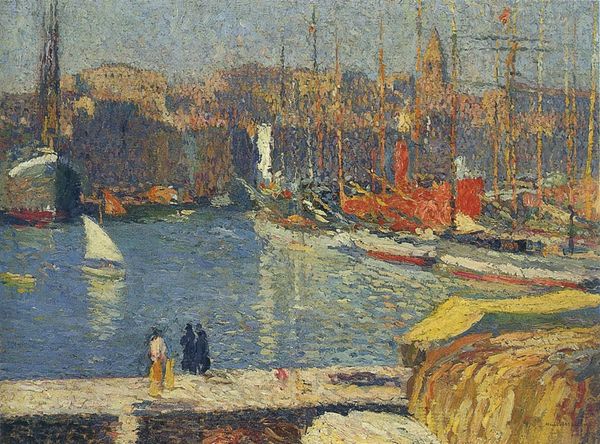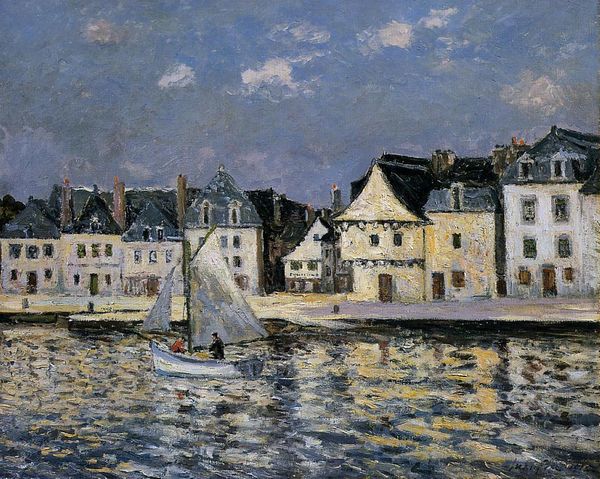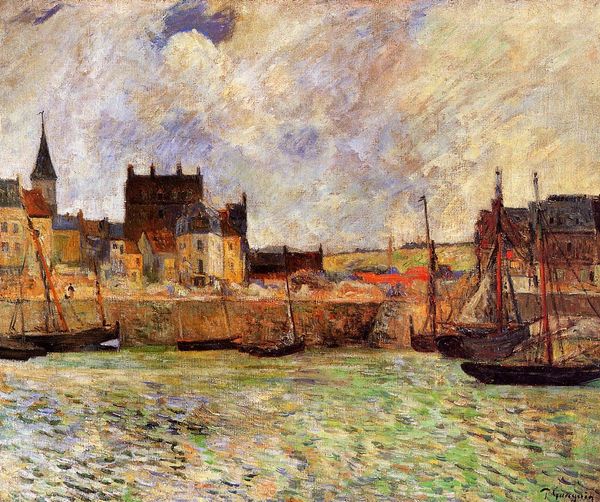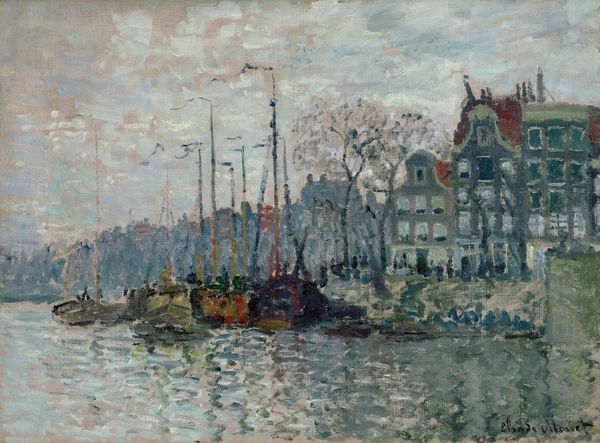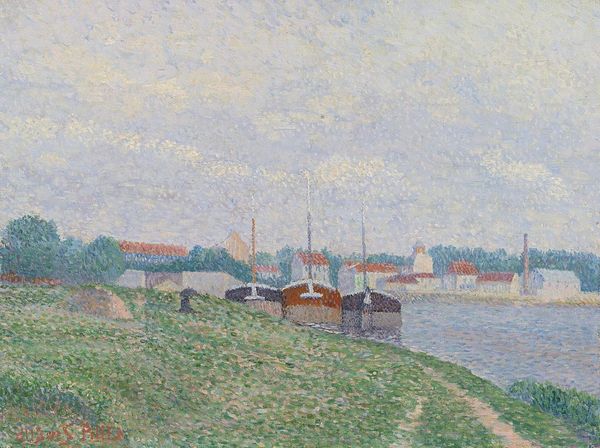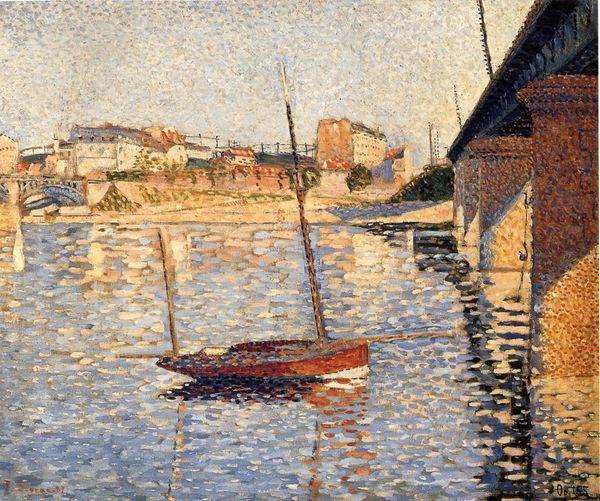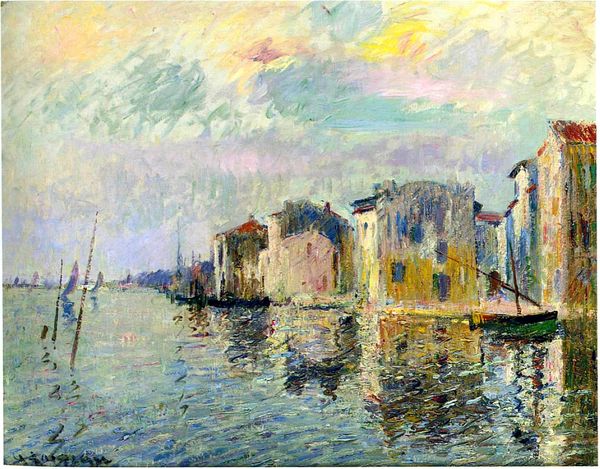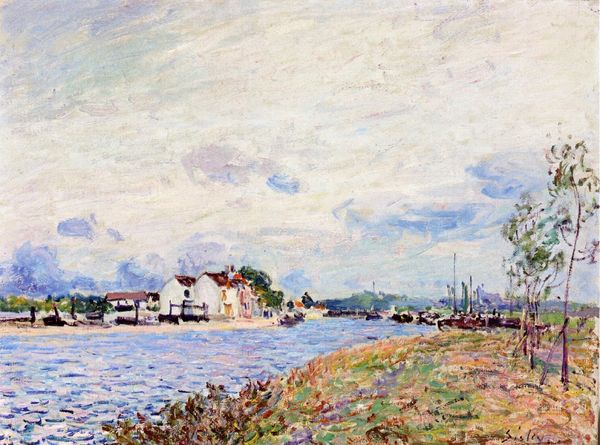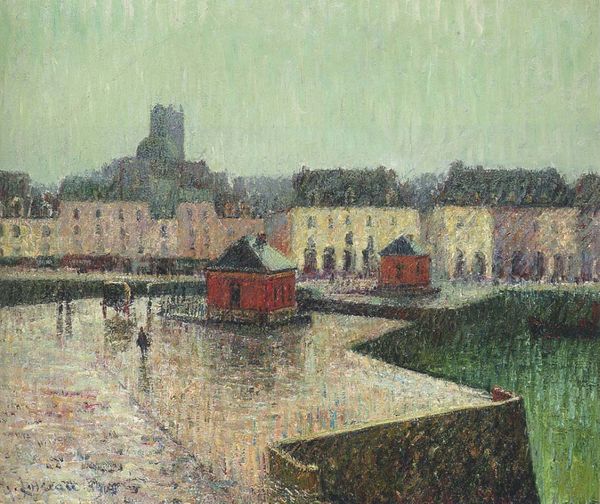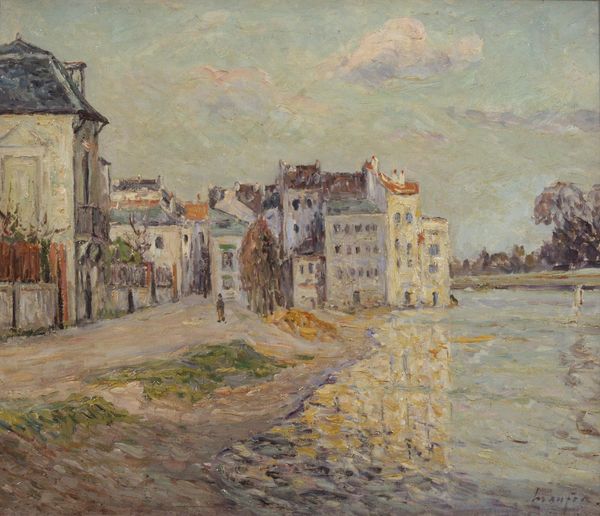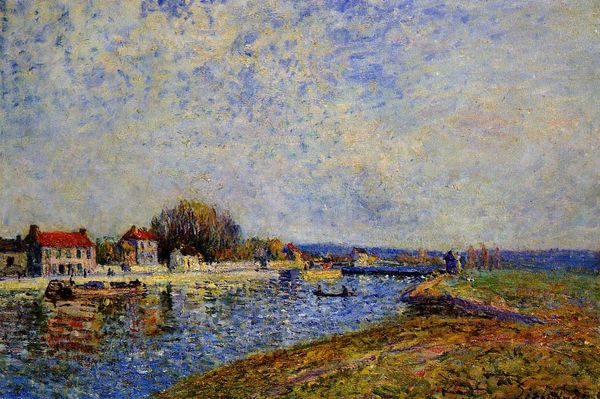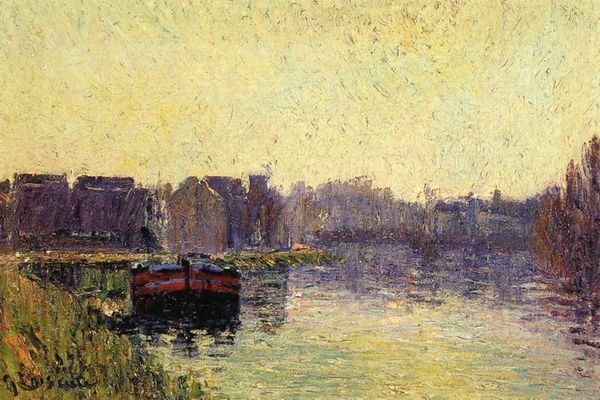
Dimensions: 54.6 x 64.8 cm
Copyright: Public domain
Editor: Here we have Gustave Loiseau's "The Port of Pornic" from 1900, an oil painting created en plein air. The impasto technique gives it such a rich, textured surface. What captures my eye most is how tactile it feels. What do you see in this piece? Curator: The texture speaks volumes. Consider the materiality: oil paint, industrially produced, applied thickly. This isn't just a pretty scene; it's about the democratization of art production through accessible materials. Loiseau uses impasto to describe Pornic, so is he drawing attention to the transformation of labor in the coastal economy with an artful and complex landscape? Editor: That’s a great point! It hadn’t occurred to me to connect the technique so directly to the scene's subject. Curator: Look closely at the repetitive, almost rhythmic, application of paint. Isn't he mirroring the routines of the port? The layering of brushstrokes becomes a record of labor. Each dab, a gesture of production, akin to the daily tasks of the workers inhabiting this port. Editor: So, by focusing on the materiality and process, we move beyond simply appreciating the visual representation and start considering its relationship to society and economy at the turn of the century. Curator: Precisely! It’s easy to get caught up in the picturesque quality but beneath the surface, Loiseau is engaging with very modern concerns of production, labor, and the changing landscape itself through artistic representation. It really invites questions, don't you agree? Editor: Absolutely. It provides an amazing alternative perspective. It gives the piece such an exciting additional layer of meaning that focuses more on process. Curator: Indeed, and I find it challenges the distinction between "high art" and everyday experience of industry! It helps you reflect upon the connection of the materials to real life!
Comments
No comments
Be the first to comment and join the conversation on the ultimate creative platform.
